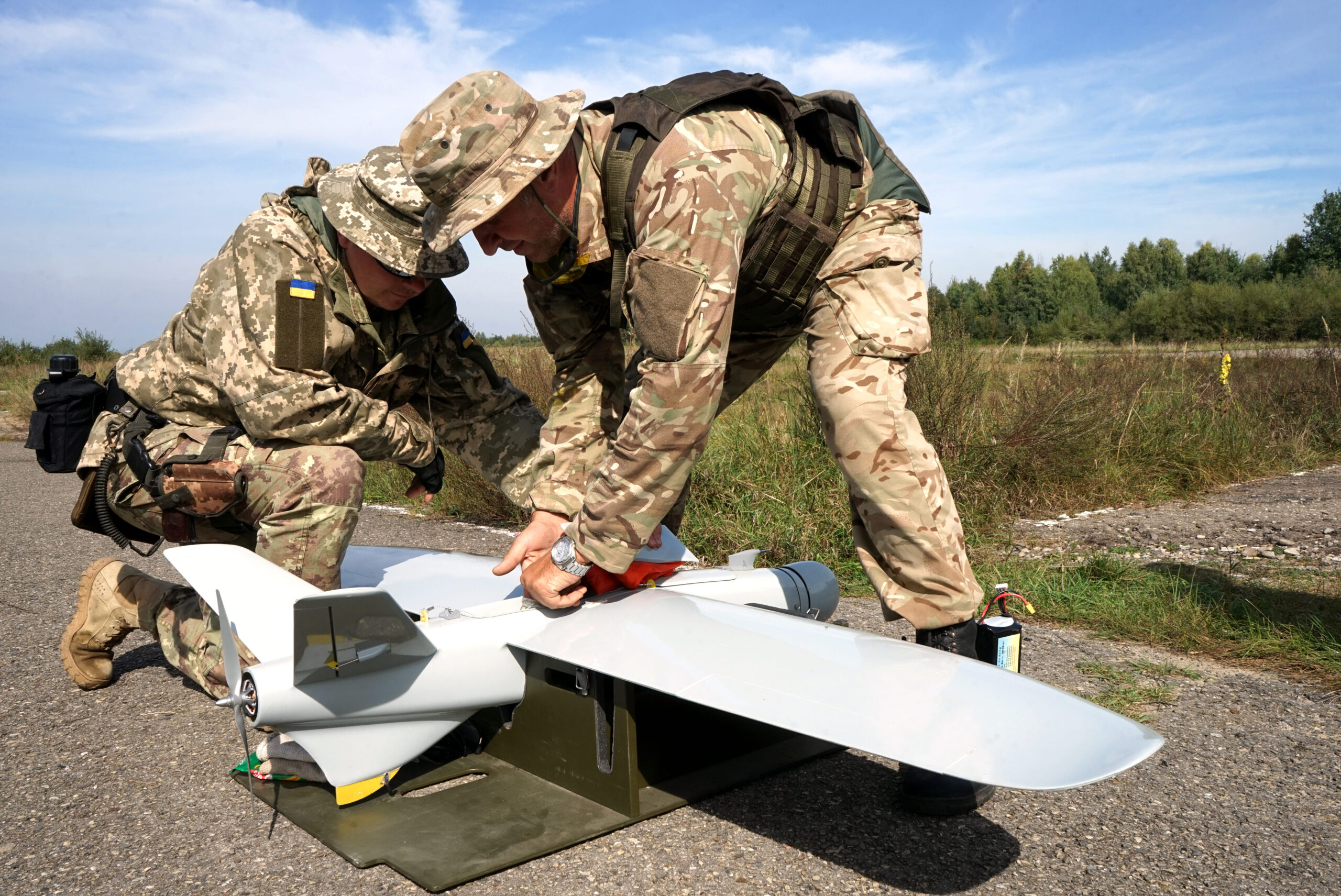European armies just wrapped up three weeks of hands-on trials that pushed small drones and ground robots through the same last-mile supply missions now common on Ukrainian front lines. Engineers and soldiers moved ammunition, water, and medical kits without a single crewed truck entering the danger zone, then logged every fault, delay, and workaround for a rapid-fire lessons-learned cycle that ends later this month at Nettuno. The exercise signals a major shift: Europe no longer studies autonomy in laboratories; it fields it in dusty training lanes while the war that inspired it still rages.
The trial formed the heart of the European Defence Agency’s first Innovation Operational Experimentation campaign, or OPEX. Agency leaders describe the project as an answer to the “valley of death” that strands prototypes before they reach troops. Defense officials confirm that OPEX splices engineers, coders, and operators into one field camp, crushing a decade-long acquisition loop into months.
Montelibretti, the Italian Army range north of Rome, hosted the technical phase. Each dawn, quad-rotor drones lifted 20-kilogram crates, dropped them into a fenced pocket, and handed off to tracked robots that rolled two kilometres to forward bunkers. Observers tracked battery drain, jamming attempts, and radio hops. A full circuit averaged under six minutes – less than one-third the time a crewed convoy needs on the same path.
Six companies supplied the hardware:
- Beyond Vision (Portugal) – low-cost fixed-wing drone
- Altus LSA (Greece) – VTOL platform
- Schiebel (Austria) – heavy-lift VTOL
- Alysis (Spain) – lightweight ground carrier
- PIAP (Poland) – wheeled medium UGV
- ARX Robotics (Germany) – tracked logistics vehicle
Teams rotated through 48 scripted serials that ranged from daylight drops to night runs under electronic attack.
Ukrainian logisticians helped write those scripts. Kyiv’s officers shared data showing how cheap supply drones kept infantry stocked during last summer’s Kharkiv push when roads were mined. According to industry sources, the Italian planners copied those low-altitude routes and blackout lighting rules verbatim.
Traditional NATO doctrine still relies on a two-truck shuttle. OPEX swapped that model for encrypted mesh networks that track every robot and reroute missions within seconds. Defense officials confirm the command post used the EU’s emerging Mission-Control baseline, giving each operator a single map for air and ground bots.
Logistics officers noted three headline gains:
- Fewer people exposed on road grids under mortar fire.
- Faster turnaround of heavy rounds such as 155 mm shells.
- Dramatic fuel savings compared with tracked trucks.
They also logged gaps: ground robots bogged down in deep mud, and the smallest quad-rotors drifted off course in gusty crosswinds.
Engineers will fix those weak spots before Nettuno. ARX Robotics plans a new lidar-based footstep planner; PIAP will load anti-spoofing filters. The open Mission Management Interface let coders push those updates across vendors in under thirty minutes.
The wider context matters. Business Insider reports that Brussels wants “millions of drones” by 2030, a goal that demands standard parts and shared code – the very elements stress-tested at Montelibretti.
270 drone sorties and 400 robot kilometres completed with zero collisions. Technicians recorded 23 critical faults, almost all battery alarms, and cleared each in about nine minutes – a rate an infantry brigade logistics chief called “combat-credible.”
Cost remains the pivot. Schiebel’s heavy-lift platform hauled 50 kg but lists near €3 million. Beyond Vision’s attritable drone moved 5 kg at about €90,000. Defense officials reckon the sweet spot is a €250,000 airframe that moves 20 kg and shares batteries with ground robots.
Money alone will not secure speed. Program managers warn that the European Defence Fund’s paperwork cycle still drags. Firms want micro-contracts under €5 million with a sixty-day turnaround, keeping pace with battlefield tweaks.
Policy lags too. Brussels is debating air-traffic rules so drones can cross borders without a separate flight plan for each state. Italy issued a one-off “U-corridor” for OPEX – the same waiver Ukraine uses for humanitarian drops near Kherson.
Security stays front-of-mind. Planners wiped navigation logs after every flight and kept raw sensor footage on local servers. Defense officials confirm that a red team jammed control links on 30 June; two drones auto-landed, but every ground robot completed its task.
Nettuno will push the concept further. Crews will practice urban delivery, lower medevac pods through broken roofs, and test casualty extraction on self-driving stretchers. Altus LSA has an auto-hover module ready for that phase.
A field handbook due in August will distill decision trees: when to choose rotary lift, when to rely on ground tracks, and how to blend both. Our analysis shows a battalion could adopt unmanned logistics in under three weeks if it follows those steps.
Critics warn that autonomy cannot mask Europe’s industrial gap with Russia. Business Insider highlights lingering dependence on Chinese components – a view echoed by an Austrian officer who wants batteries built inside the EU, not shipped through distant ports.
Doctrine must shift too. Legacy manuals forbid pauses under fire; resupply drones force troops to hold position for two minutes so a robot can land. Training syllabi will change to teach that drill.
Seven member states formed a working group on 3 July to align procurement, training, and sustainment schedules, aiming for first operational fielding with the EU Battlegroup 2026-II rotation.The Montelibretti campaign will not solve Europe’s ammunition deficit nor its air-defense shortfall, but it does tackle the last-mile problem that drains manpower and vehicles. If the follow-up phase meets expectations, drone-to-robot chains may appear in Baltic exercises by early 2026.
REFERENCE SOURCES
- https://www.arx-robotics.com/
- https://www.defensemirror.com/news/39809
- https://www.defensenews.com/global/europe/2025/07/04/eu-militaries-game-out-ukraine-inspired-resupply-tactics-via-drones/
- https://defence-industry.eu/european-defence-agency-conducts-first-eu-level-opex-campaign-to-test-unmanned-systems/
- https://www.businessinsider.com/europe-urged-produce-millions-drones-year-russia-ukraine-war-2025-7
- https://eda.europa.eu/news-and-events/news/2025/07/03/first-eu-level-opex-campaign-tests-uav-and-ugv-systems-in-italy
- https://www.theparliamentmagazine.eu/news/article/europes-defence-push-risks-neglecting-drone-revolution
- https://de.linkedin.com/company/arx-robotics



